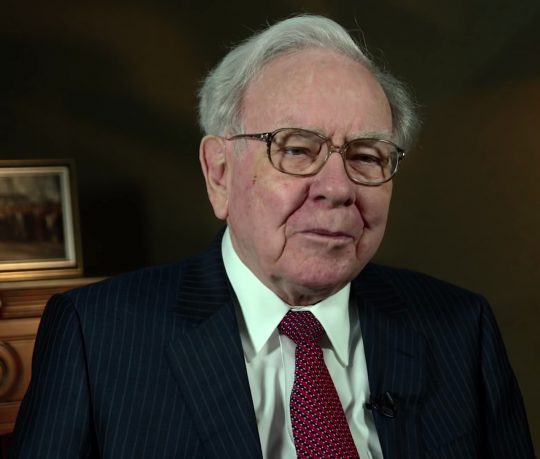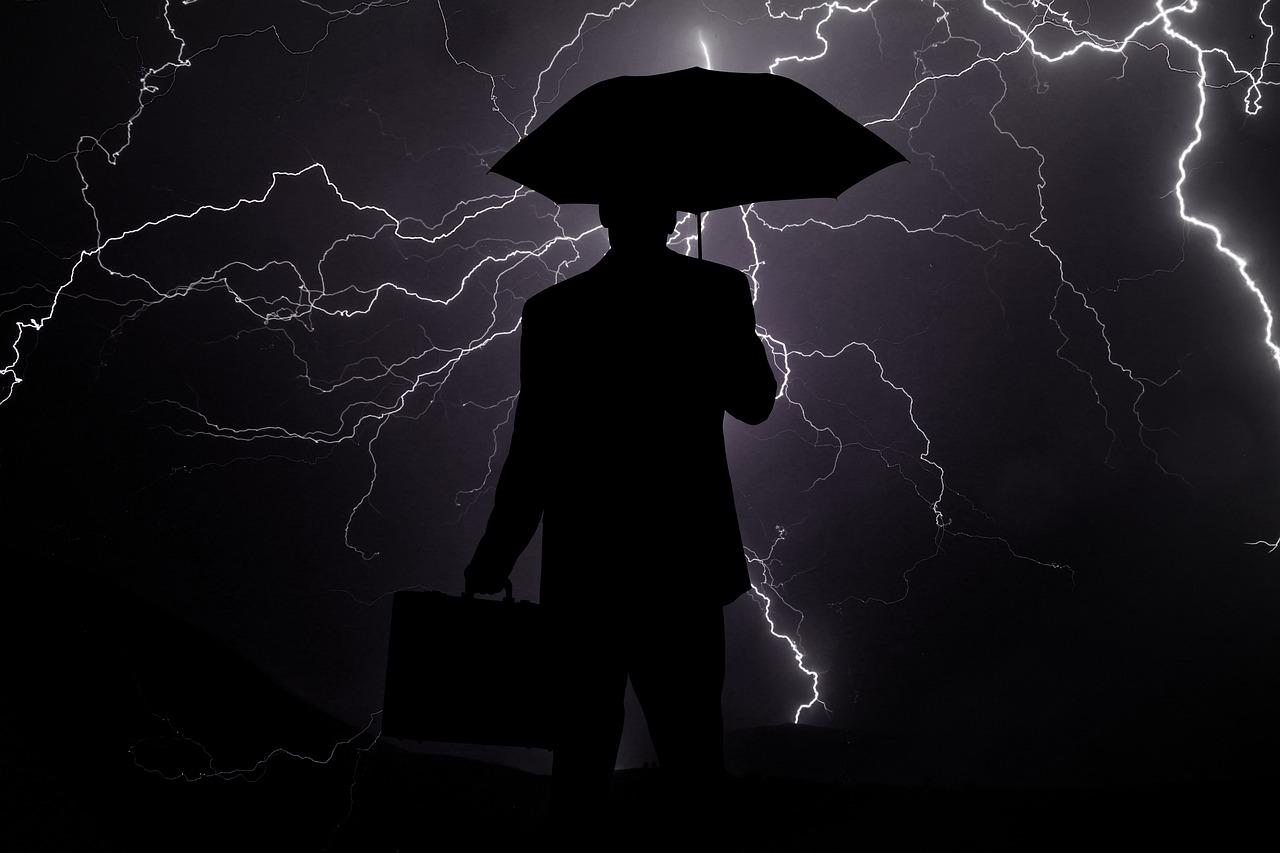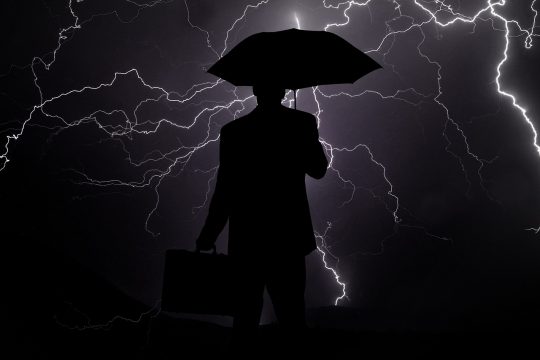 The stock market hasn’t started a quarter this badly in about a decade, and if stock prices continue to plummet it could set off a wave of panic selling unlike anything that we have seen in a very long time. Of course it wouldn’t be the first time that we have seen a major stock market crash during the month of October. If I mention “October 1929”, you immediately know what I am referring to, and the same thing is true for October 1987 and October 2008. Today, we are facing a global economic slowdown, an impeachment crisis in Washington and a rapidly escalating trade war simultaneously, and it seems like almost everyone on Wall Street is suddenly talking about “the coming recession”. In such an environment, any piece of bad news is going to push stocks lower, and that is certainly what happened on Wednesday…
The stock market hasn’t started a quarter this badly in about a decade, and if stock prices continue to plummet it could set off a wave of panic selling unlike anything that we have seen in a very long time. Of course it wouldn’t be the first time that we have seen a major stock market crash during the month of October. If I mention “October 1929”, you immediately know what I am referring to, and the same thing is true for October 1987 and October 2008. Today, we are facing a global economic slowdown, an impeachment crisis in Washington and a rapidly escalating trade war simultaneously, and it seems like almost everyone on Wall Street is suddenly talking about “the coming recession”. In such an environment, any piece of bad news is going to push stocks lower, and that is certainly what happened on Wednesday…
Stocks fell sharply on Wednesday, adding to Wall Street’s poor start to the final quarter of 2019 as investors grapple with fears of an economic recession.
The Dow Jones Industrial Average declined by 494.42 points, or 1.9% to close at 26,078.68. The Dow also broke below its 50-day and 100-day moving averages, two technical levels watched by traders. The S&P 500 lost 1.8% to 2,887.61 to fall below its 100-day moving average as the tech sector dropped 2%. All 11 S&P 500 sectors were down, with 10 of them sliding at least 1.2%.
Overall, the Dow Jones Industrial Average was down more than 800 points over the first two days of this month, and that makes this the worst start to a quarter for the stock market since 2009.
As I have repeatedly warned my readers, the stock market is more primed for a crash than it has ever been before in all of U.S. history, and investors are becoming increasingly concerned that the party is finally over.
And without a doubt, those in the financial community are very well aware of what has happened during previous Octobers, and that is making everyone just a little bit extra jittery right now…
The market is turning into a “sell first and ask question later market,” said Ryan Detrick, senior market strategist for LPL Financial.
“October is known for being one of the most volatile months and after two days, it is living up to that reputation,” Detrick added.
If a way to resolve our trade war with China could be found, that would greatly calm the markets.
Unfortunately, that isn’t going to happen. Instead, the Trump administration just decided to escalate our trade war with Europe. The following comes from Zero Hedge…
In the aftermath of today’s surprising WTO decision, in which the global trade mediator sided with the US in finding some $7.5BN in European Airbus subsidies illegal, moments ago the US Trade Rep confirmed that the US will waste no time in retaliating to what – for years – were illegal trade practices.
According to the USTR office, the US will impose a total of $7.5 billion in retaliatory tariffs on EU imports starting October 18, with 10% tariffs on large commercial aircraft, and 25% on agricultural and other industrial goods.
Needless to say, the Europeans are going to retaliate, and global trade will take another big hit.
Most Americans still seem to think that everything is going to work out just fine somehow, but the truth is that this economic downturn is starting to become really painful.
Nearly every day we are getting more bad economic numbers, and that was definitely true on Wednesday. The following comes from Bloomberg…
U.S. auto sales took a big step back in September, setting the stage for hefty incentive spending by carmakers struggling to clear old models from dealers’ inventory.
Results were disastrous for leading Asian automakers Toyota Motor Corp. and Honda Motor Co., which both suffered double-digit declines that were worse than analysts anticipated. While a fuller picture will emerge Wednesday when General Motors Co. and Ford Motor Co. are due to report, the poor performance suggests that overall deliveries of cars and light trucks could come in worse than the 12% drop anticipated by analysts, based on six estimates.
Even worse than a 12 percent decline?
If the U.S. economy really was in “good shape”, this would not be happening. In fact, this is the kind of number that we would expect to see in the middle of a very deep recession.
Meanwhile, we also just got some really bad economic news from New York City…
Just in case you thought the ISM number was a flukey ‘transitory’ one-off, the New York City ISM just plunged, with the outlook collapsing to its lowest since Feb 2009.
And ahead of Friday’s payroll print, NYC ISM’s employment index plunged to 52.5 from 69.0.
At one time, New York City was on the leading edge of “the economic recovery”, but now things have completely reversed. Economic conditions are rapidly deteriorating, and property values in the city are absolutely plunging…
The Manhattan real estate market stumbled in the third quarter of 2019, new reports show, as prices plunged and fewer buyers were willing to purchase higher-priced properties in the wake of two recent tax increases.
The median sales price for properties fell 17 percent from the same quarter last year, to $999,950, according to new data from CORE. The average sales price dropped 12 percent, to $1.64 million.
Wall Street is starting to figure out that these horrible economic numbers are not going away, and investors are starting to get very nervous.
Many of them are still having a hard time believing that the bull market is completely dead, but at this point it definitely is not going to take much to set off an epic rush for the exits.
Whether it happens this month or not, everyone knows how this ridiculous stock market bubble will end.
Throughout U.S. history, whenever stock valuations have been stretched to such an extreme, a stock market crash has always followed.
This time around, it isn’t just an economic crisis that we are facing, and the drama in Washington is going to have a major impact on stock prices in the months ahead.
 About the author: Michael Snyder is a nationally-syndicated writer, media personality and political activist. He is the author of four books including Get Prepared Now, The Beginning Of The End and Living A Life That Really Matters. His articles are originally published on The Economic Collapse Blog, End Of The American Dream and The Most Important News. From there, his articles are republished on dozens of other prominent websites. If you would like to republish his articles, please feel free to do so. The more people that see this information the better, and we need to wake more people up while there is still time. Of course the most important thing that we can share with people is the gospel of Jesus Christ, and if you would like to learn more about how you can become a Christian I would encourage you to read this article.
About the author: Michael Snyder is a nationally-syndicated writer, media personality and political activist. He is the author of four books including Get Prepared Now, The Beginning Of The End and Living A Life That Really Matters. His articles are originally published on The Economic Collapse Blog, End Of The American Dream and The Most Important News. From there, his articles are republished on dozens of other prominent websites. If you would like to republish his articles, please feel free to do so. The more people that see this information the better, and we need to wake more people up while there is still time. Of course the most important thing that we can share with people is the gospel of Jesus Christ, and if you would like to learn more about how you can become a Christian I would encourage you to read this article.














